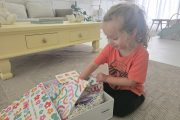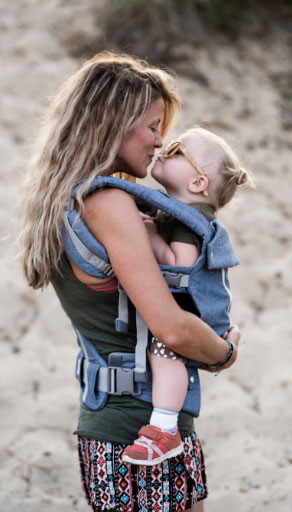Ask the Childbirth Educator: Pregnancy and Incontinence

I am 6mths pregnant and am having problems with incontinence – I have been doing pelvic floor exercises but it still keeps happening!
Sarah
Your pelvic floor muscles are attached to the inside of your pelvis and act like a sling to support your abdominal and pelvic organs. These muscles form a figure-eight around your urethra, vagina, and anus. During pregnancy, the increased weight of your uterus, together with the relaxing effect of hormones, may make these muscles sag. In addition to urinary incontinence, many women also develop Haemorrhoids during pregnancy.
To check the strength of your pelvic floor muscles, try this exercise:
While urinating, partially empty your bladder, then stop the flow. If you can’t, your muscles are weak. Don’t do this exercise more than once as you could introduce a bladder infection.
Regularly exercising the pelvic floor muscles (commonly known as “Kegel exercises”) during pregnancy and in the postpartum period help to tone the muscles; reducing the risk of long term incontinence (leaking urine or faeces). You should aim to do multiple sets of Kegels every day.
To do Kegels properly, you should tighten the muscles around your urethra and vaginal opening as if you’re stopping the flow of urine. Don’t hold your breath and try not to tighten the muscles in your buttocks, thighs or abdomen. Imagine your pelvic floor is an elevator and as you tighten your muscles, it is like going up a floor in the elevator each time. You should feel your pelvic floor lift slightly and become tense. Hold tightly for 10 seconds. If you feel the muscle tension diminishing before the 10 seconds are up, then tighten the muscles again until the time is up. Relax and rest your muscles for 10 seconds before repeating.
If after regularly exercising your pelvic floor muscles though, you are still experiencing incontinence, consult a physical therapist who specialises in nonsurgical treatment of incontinence.
Tanya Strusberg
Lamaze Certified Childbirth Educator
Tanya was born and raised in Hong Kong to Australian parents. She moved to Australia in 1995 and worked for a number of years as an arts marketing specialist before moving to Israel in 2006.
Tanya trained to become a Lamaze Certified Childbirth Educator (LCCE) in Israel through the Douglas College Perinatal Program in Vancouver, Canada. She studied with renowned childbirth educator Rachelle Oseran BA, FACCE, LCCE, CD(DONA) who has over 29 years of experience in the field of perinatal education.
Tanya and her husband moved to Melbourne with their two children Liev and Amalia in February 2012. As the only LCCE in Australia, Tanya is excited to be pioneering Lamaze childbirth education here and looks forward to helping pregnant women build their confidence for what is undoubtedly the most awe-inspiring moment of a woman¹s life becoming a mother!










